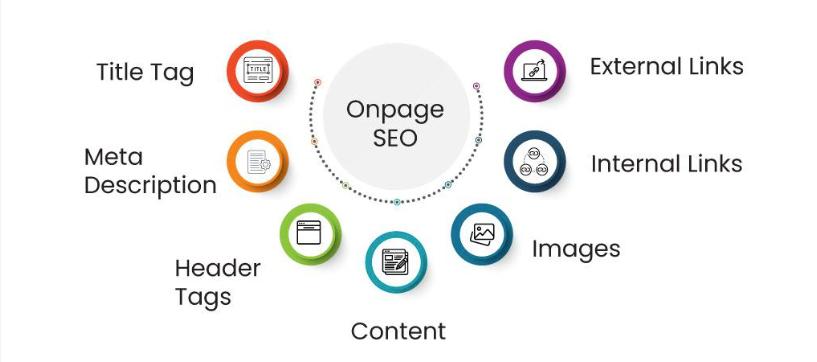On-page SEO strategies : In today’s digital landscape, a strong online presence is crucial for any business. But how do you ensure your website gets noticed amidst the vast sea of content? On-page SEO strategies are your secret weapon. By optimizing your website’s content and structure, you can significantly improve your search engine ranking and attract more organic traffic.

This blog dives deep into the top on-page SEO strategies to propel your website to the top of search results pages.
- Content is King (and Queen):
High-quality, informative content is the cornerstone of any successful on-page SEO strategy. Craft compelling content that resonates with your target audience and addresses their search intent. Conduct thorough keyword research to identify relevant terms your audience uses, and incorporate them naturally throughout your content. But remember, don’t keyword stuff! Focus on creating valuable and engaging content that establishes you as an authority in your field.
2. On-page SEO strategies Title Tags and Meta Descriptions: A Powerful Duo
Title tags and meta descriptions are like billboards for your webpages, giving search engines and users a glimpse into your content. Optimize your title tags by including your target keyword at the beginning of the title, keeping it concise (ideally under 60 characters), and accurately reflecting your content.
Meta descriptions are short summaries that appear below your title tag in search results. Craft compelling meta descriptions that entice users to click through. Include your target keyword naturally and highlight the value your content offers.
3. Embrace the Power of Structure
Headings and subheadings not only enhance readability but also improve on-page SEO. Structure your content using clear and descriptive headings (H1, H2, H3) that incorporate your target keyword when relevant. This helps search engines understand your content’s hierarchy and identify key points.
4. URLs: Short, Sweet, and Keyword-Rich
Your website’s URLs should be user-friendly and optimized for search engines. Instead of generic strings of numbers and letters, use descriptive URLs that incorporate your target keyword. This makes your URLs easier to understand for both users and search engines.
5. On-page SEO strategies – Internal Linking: Building a Strong Website Network
Internal linking involves creating connections between different pages on your website. Strategically link to relevant pages within your website using clear anchor text, which is the clickable text in the link. This helps search engines understand the structure of your website and navigate your content more efficiently. Internal linking also keeps users engaged by guiding them to explore related content on your site.
6. Image Optimization: Don’t Forget the Visuals
Images can significantly enhance your website’s visual appeal and user experience. However, don’t underestimate their SEO power. Optimize your images by including relevant keywords in the file name, alt text description, and caption.
7. Technical SEO: The Foundation of Success
While high-quality content reigns supreme, on-page SEO goes beyond content creation. Ensure your website has a fast loading speed, a mobile-friendly design, and a secure connection (HTTPS). These technical aspects significantly impact user experience and search engine rankings.
Conclusion
By implementing these on-page SEO strategies, you can significantly improve your website’s visibility and organic traffic. Remember, SEO is an ongoing process. Regularly monitor your website’s performance, stay updated on the latest SEO trends, and refine your strategies to stay ahead of the curve. With dedication and these valuable tips, your website will be well on its way to ranking high in search results.
